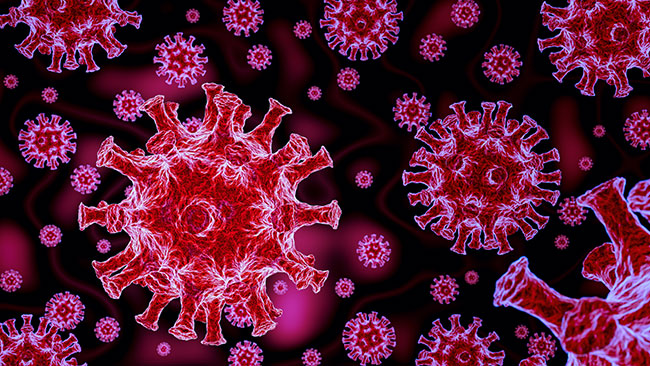
Features
Staying prepared: Why law enforcement must remain diligent with disinfection
May 20, 2024 By Ron Brown
 Photo: Getty Images
Photo: Getty Images At the height of the pandemic, cleaning, sanitation and disinfecting were a major priority in public spaces such as police departments. More than four years post-pandemic with new cases of the virus declining, adherence to these protocols may not be as rigorous. Outbreaks of other transmissible viruses such as norovirus and measles are still a major reminder of the ongoing importance of regular disinfection procedures to keep officers and the public safe and healthy.
According to the Public Health Agency of Canada1, the norovirus is very contagious with debilitating symptoms. While most people begin to feel better on their own within two to three days, contracting an illness of any kind can pose numerous issues for law enforcement agencies including staff shortages and delayed emergency response times.
Measles, considered a disease of the past, has become a current health threat to the public. CBC News2 reported in late March, that at least 31 cases of measles have been reported so far this year across Canada.
Daily, law enforcement and corrections officers are faced with unpredictable pathogenetic exposures. To protect officers from these and other contagions, police departments should adopt and maintain best practices for decontaminating all offices, correctional facilities and police vehicles.
Best practices for disinfecting rooms and vehicles
Know the difference between cleaning, sanitizing and disinfecting:
Cleaning removes dust and dirt, sanitizing reduces the number of germs on objects and surfaces and disinfecting is the process of killing germs on surfaces. No-touch decontamination (NTD) is an extremely effective process in eliminating present contaminants. This process refers to technology that decontaminates or disinfects surfaces without any physical contact, removing or reducing human involvement to help eliminate the risk of cross-contamination. These technologies continue to be widely used to maintain healthy workspaces.
Establish a regular schedule for disinfecting:
When implementing best practices for maintaining a clean facility, law enforcement agencies should establish a cleaning schedule that ensures spaces are safe for not only officers and staff but for communities that interact with them as well.
Disinfect patrol cars and other law enforcement vehicles:
In 24 hours, a patrol car can come into contact with multiple personnel and civilians. This elevates the risk of contamination. Patrol cars should be disinfected after each shift.
Use innovative decontamination technology:
Innovations in decontamination technology have significantly increased since the pandemic, providing officers and other first responders with various tools to maintain clean facilities. Some of the more commonly used decontamination technologies include aerosolized fogging systems, vaporized systems, electrostatic spraying and UV light.
- Aerosolized Fogging Systems are designed to generate an aerosolized dry-mist fog that dispenses a specific amount of disinfectant in the specified area. The machine dispenses the disinfectant by creating droplets that are small enough to disperse evenly throughout an environment while being large enough to not evaporate too quickly. These systems in particular are extremely effective at eliminating pathogens on easy-to-reach surfaces like walls, floors, and ceilings as well as harder-to-reach surfaces in nooks and crevices that other disinfectant methods can’t reach.
- Electrostatic Sprayers are disinfection chemical atomizers that spray an electrostatically charged mist onto surfaces and objects. While electrically charging the droplets increases their adherence to surfaces, the high voltage required to charge the particles adds some increased risk to the user, as well as increased system complexity and cost.
- UV Light-based disinfection systems use pulses of irradiated UV-C light to kill pathogens on surfaces. This light naturally damages the DNA and RNA of microorganisms, rendering them unable to replicate. Although quick and chemical-free, UV light works only on surfaces that are in the direct line of sight of the UV light. As the UV light does not bend around corners, this system requires the light to be moved and positioned within the space to complete a decontamination protocol.
Disinfection technologies such as these deliver the correct level of disinfectant for decontamination without damaging surfaces or equipment.
Even as the pandemic eases, everyday health concerns such as common colds and flus still provide an increased risk to officers interacting with the public daily. Implementing disinfection protocols that follow decontamination best practices can help to protect officers and staff and the communities they serve.
References
- “Norovirus: Symptoms and treatment.” Public Health Agency of Canada. Accessed at https://www.canada.ca/en/public-health/services/food-poisoning/norovirus.html.
- “What to know about the measles vaccine — from who should get one, to how long immunity lasts.” CBC News. Accessed at https://www.cbc.ca/news/health/what-to-know-about-the-measles-vaccine-from-who-should-get-one-to-how-long-immunity-lasts-1.7152266.
Dr. Ronald Brown, M.D., CEO of AeroClave, has decades of experience in emergency medicine, acting as an EMS Medical Director from 1985–2000.
Print this page